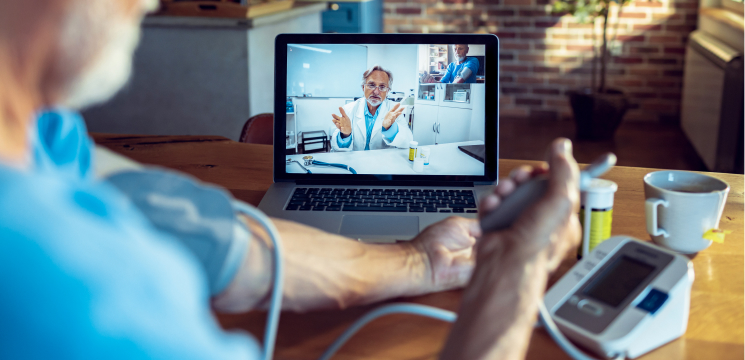Telehealth Care is a cost-effective way to provide healthcare services. It allows patients to connect with their health care provider from the comfort of their home or office.

It also has the potential to help address other social determinants of health, including transportation access and poverty. Additionally, telehealth provides healthcare in times of national and state emergencies.
Accessibility to healthcare is a concern for many people and is one of the most important factors that can affect a person’s health. Telehealth Care can reduce this barrier for patients by making it easier to receive routine checkups and other specialized care that is needed when visiting a provider’s office.
While telehealth technology makes it easier for healthcare providers to offer services in remote locations, there are still barriers to telehealth that can make it hard for certain groups of people to utilize telehealth effectively. For instance, some people with disabilities may have trouble using the technology or lack the digital literacy necessary to access telehealth programs.
Some of these issues can be addressed by educating and training beneficiaries about how to use telehealth technologies or by offering technical support. Additionally, the accessibility of telehealth can be affected by social determinants of health (SDoH)—conditions in living, working, and playing environments that influence a person’s health.
For example, a person with physical disabilities might have trouble getting to the doctor’s office to get a physical exam if they live in a rural area. Fortunately, telehealth can help these patients avoid a trip to the emergency room by allowing them to receive care via videoconferencing instead.
In addition, telehealth can provide an alternative to in-person appointments for patients with chronic conditions who need regular monitoring or who require annual checkups. It can also reduce the barrier of travel to and from a provider’s office for patients who need to see a specialist in a different city, which is often a major expense and time-consuming process for people with limited mobility.
Telehealth technology also allows a patient to have more control over their treatment and preventative care plans. For example, patients with diabetes can track their glucose levels and record data that their telehealth nurse or clinician can view.
The accessibility of telehealth can vary from state to state, with some states being more restrictive than others in their policies for providing telehealth care. Moreover, individual state Medicaid programs have different guidelines for reimbursement for telehealth services. CCHP’s biannual report, State Telehealth Laws and Reimbursement Policies, and its browsable state policy guides are available to help patients and their caregivers determine the best possible options for obtaining telehealth services.
For people who live in rural areas or far from a medical center, telehealth offers convenience. Patients can visit doctors and specialists without leaving their homes, saving both money and time. Using telehealth, they can have a real-time virtual doctor’s appointment through video or smartphone chat.
A doctor can also communicate with a patient over the phone or via an online portal, which lets them view their health history and record any questions they have in real time. In some cases, physicians can even conduct physical exams remotely using a video connection.
It’s easier for healthcare providers to see more patients. The technology can help care teams spend more time on actual patient care and less on slogs like administrative tasks.
This is particularly important during times of national and state emergencies, when healthcare systems are on the front lines and need to be able to provide equivalency across all levels of the system.
Many healthcare organizations, hospitals, and health plans offer telehealth services, which can be covered by your insurance. However, you’ll need to check with your insurance provider for coverage and reimbursement policies.
Telehealth is also a convenient way to get mental health services and support, like counseling sessions or weight management programs. It can also be used to monitor long-term health issues or chronic conditions.
Often, it’s more efficient for physicians to work with patients remotely than in person, especially for routine medical appointments such as reordering medications or seeing new patients. These virtual visits save the doctor’s time and energy and can allow him or her to focus on more complicated and serious cases.
